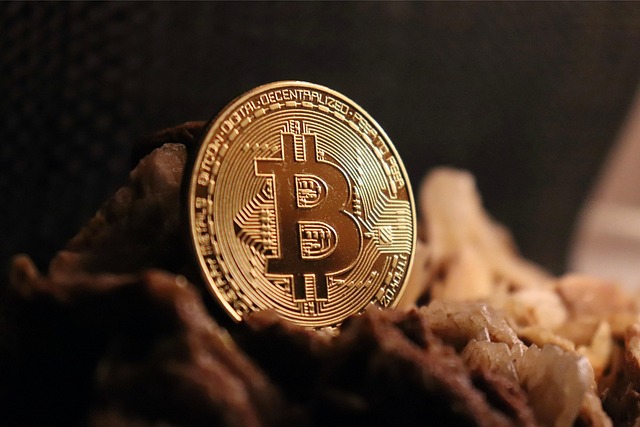More than 70 US crypto ETFs await SEC decision this year — Bloomberg
More than 70 cryptocurrency exchange-traded funds (ETFs) are slated for review by the US Securities and Exchange Commission (SEC) this year. According to Bloomberg analyst Eric Balchunas, the list includes proposed ETFs holding a range of assets, from altcoins to memecoins to derivatives instruments. “Everything from XRP, Litecoin and Solana to Penguins, Doge and 2x Melania and everything in between,” Balchunas said in an April 21 post on the X platform. “Gonna be a wild year.”Crypto ETFs’ SEC review schedule. Source: Eric Balchunas/BloombergRelated: ARK adds staked Solana to two tech ETFsUncertain institutional demandThe planned funds listings come as institutional investors turn increasingly bullish on crypto as an asset class. Upward of 80% of institutions say they plan to increase allocations to crypto in 2025, according to a March report by Coinbase and EY-Parthenon. However, analysts caution that just because ETFs are approved for US listings doesn’t guarantee widespread adoption, especially for funds holding more obscure alternative cryptocurrencies.“Having your coin get ETF-ized is like being in a band and getting your songs added to all the music streaming services,” Balchunas said. “Doesn’t guarantee listens but it puts your music where the vast majority of the listeners are.”Comparing asset manager Grayscale’s net assets pre-ETF launch across different cryptocurrencies suggests tepid demand for altcoin ETFs. Source: Sygnum BankSygnum Bank’s research head, Katalin Tischhauser, told Cointelegraph she expects altcoin ETFs to see cumulative inflows of several hundred million to $1 billion, far less than spot Bitcoin funds. Funds holding Bitcoin (BTC) — the first spot cryptocurrency approved for listing in a US ETF wrapper — attracted upward of $100 billion in net assets last year. However, ETFs using options and other derivatives to provide structured exposure to cryptocurrencies such as Bitcoin and Ether might see more institutional uptake, analysts said. Options on spot cryptocurrencies unlock numerous potential portfolio strategies for investors and could potentially catalyze “explosive” price upside for digital assets such as Bitcoin, Jeff Park, Bitwise Invest’s head of alpha strategies, said in September.Options are contracts granting the right to buy or sell an underlying asset at a certain price. On April 21, ARK Invest added exposure to staked Solana (SOL) to two of its existing ETFs. The asset manager said it marks the first time spot SOL has been available to US investors in an ETF. Magazine: ‘Bitcoin layer 2s’ aren’t really L2s at all: Here’s why that matters
ARK adds staked Solana to two tech ETFs
ARK Invest has added exposure to staked Solana (SOL) to the portfolios of two of its exchange-traded funds (ETFs), the asset manager said in a client email reviewed by Cointelegraph. As of April 21, the two ARK funds — ARK Next Generation Internet ETF (ARKW) and ARK Fintech Innovation ETF (ARKF) — now hold shares of 3iQ’s Solana Staking ETF (SOLQ), a Canadian ETF holding staked SOL, ARK said. The two ARK funds are designed to offer broad exposure to emerging technologies, and comprise a mix a technology stocks — including crypto-focused companies such as Coinbase, Block, and Robinhood — and spot cryptocurrencies, according to ARK’s website.According to ARK, adding the SOL ETF shares makes “ARKW and ARKF the first US-listed ETFs to gain exposure to Solana.”In March, asset manager Volatility Shares launched two ETFs that offer exposure to SOL using financial derivatives, but spot Solana ETFs are still awaiting approval by US regulators.ARKW’s fund holdings. Source: ARK InvestRelated: Spot Solana ETFs to launch in Canada this weekSolana ETFs’ proposals line up for approvalExperts say the recent listing of Solana futures on the Chicago Mercantile Exchange (CME), a US derivatives exchange, indicates that US SOL ETF listings are coming soon. Last week, 3iQ launched its Solana ETF in Canada following approval of several such funds by the Ontario Securities Commission (OSC), Canada’s largest securities regulator. Solana is the second-most popular blockchain network after Ethereum. Its total value locked exceeds $7 billion, versus approximately $45 billion for the Ethereum network, according to data from DefiLlama. Blockchain networks by TVL. Source: DeFiLlamaThe US Securities and Exchange Commission (SEC) authorized spot Ether ETFs to trade in the United States in July 2024. In July, ARK partnered with 21Shares, a crypto-focused fund issuer, to launch ARK 21Shares Bitcoin ETF (ARKB), a spot Bitcoin (BTC) fund with nearly $4 billion in net assets as of April 21, according to ARK’s websiteIt also partnered with 21Shares on an Ether ETF but dissolved the partnership in June, shortly before the fund launched under 21Shares’ branding. Magazine: SCB tips $500K BTC, SEC delays Ether ETF options, and more: Hodler’s Digest, Feb. 23 – March 1
Nasdaq-listed Upexi shares up 630% after $100M raise, SOL treasury
Upexi, a brand owner that specializes in supply chain management, is diversifying into the cryptocurrency sector. On April 21, the company announced a $100 million raise, with over 90% earmarked for building a Solana (SOL) treasury strategy.After the announcement, shares of Upexi have skyrocketed from a $2.30 close on April 17 to $16.79 at this writing, marking a 632% jump for the day.UPXI intraday performance on the Nasdaq. Source: Google FinanceMany “prominent” crypto venture capitalist firms participated in the $100 million raise, according to an announcement. Backers include the family office of Arthur Hayes, Delta Blockchain Fund, Delphi Ventures, Hivemind, Borderless, and White Star Capital, among others. The round was completed with a sale of around 44 million shares of common stock at a price of $2.28.According to Upexi’s recent financials, it posted a profit of $3 million in the last quarter of 2024, down 34.8% or $4.6 million from the same time period in 2023.Companies mimic StrategyStrategy (formerly MicroStrategy) was one of the first mainstream companies to adopt a cryptocurrency treasury strategy. It started purchasing Bitcoin (BTC) in August 2020, and its stock price has jumped significantly since then. Currently, over 13,000 companies have exposure to Strategy.Other companies have followed Strategy’s lead in adopting a Bitcoin treasury, including Metaplanet, which topped $400 million in BTC holdings on April 21, and Semler Scientific, which reported paper losses for its BTC holdings on April 16.Related: Metaplanet, Semler Scientific were ‘zombie companies’ until Bitcoin, execs sayFewer companies adopting a crypto treasury strategy have chosen a coin other than Bitcoin. One such company is Janover, which was taken over by former Kraken executives on April 7. Like Upexi, it is adopting a Solana treasury strategy and acquired $10.5 million worth of SOL on April 15.SOL is the native token of the Solana blockchain. The network, once seen as the “Ethereum killer,” has fast speeds based on a proof-of-history consensus mechanism. Solana has been among the big winners of the latest bull market, thanks to use cases like memecoins and decentralized infrastructure applications. Magazine: Memecoins are ded — But Solana ‘100x better’ despite revenue plunge
Price analysis 4/21: SPX, DXY, BTC, ETH, XRP, BNB, SOL, DOGE, ADA, LINK
The US Dollar Index (DXY) plunged below the 98 level on April 21, falling to a three-year low. That catapulted gold to a new all-time high, and Bitcoin (BTC) also showed strength, rising above $88,000. BitMEX co-founder and Maelstrom chief investment officer Arthur Hayes believes it may be the “last chance” to buy Bitcoin below $100,000. Hayes expects the Federal Reserve to announce US Treasury buybacks, which will act as a “Bazooka” for Bitcoin’s price trajectory.Daily cryptocurrency market performance. Source: Coin360The whales seem ready for the move higher, as they have been accumulating in March and April. According to Glassnode data, the number of wallets holding more than 1,000 Bitcoin increased from 2,037 in late February to 2,107 on April 15.Could Bitcoin bulls sustain the higher levels, triggering a rally toward $100,000? Will the altcoins follow? Let’s analyze the charts to find out.S&P 500 Index price analysisThe S&P 500 Index (SPX) recovery hit a wall at the 20-day exponential moving average (5,399) on April 14.SPX daily chart. Source: Cointelegraph/TradingViewThe 5,119 level is the critical support to watch out for on the downside. If this level gets taken out, the index could plummet to 4,950. The bulls are expected to vigorously defend the zone between 4,950 and 4,835.Instead, if the price rebounds off 5,119, it signals that the bulls are trying to form a higher low. The index could then oscillate between 5,119 and 5,500 for a while. Buyers will have to drive the price above 5,500 to signal that the correction may be over.US Dollar Index price analysisThe US Dollar Index resumed its downtrend on April 21, indicating that the bears remain in charge.DXY daily chart. Source: Cointelegraph/TradingViewThe index could collapse to 97.50, which could act as strong support. The oversold level on the relative strength index (RSI) signals a possible relief rally in the near term. Sellers are expected to aggressively defend the zone between 99 and 100.27 on any recovery attempt. If the price turns down from the overhead zone, the index risks a fall to 95.The first sign of strength will be a break and close above the 100.27 resistance. That indicates solid buying at lower levels. A short-term trend change is likely if buyers propel the price above the 20-day EMA (101.64).Bitcoin price analysisBitcoin made a decisive move higher after days of narrow-range trading, and the price has reached a critical resistance at the 200-day SMA ($88,238). BTC/USDT daily chart. Source: Cointelegraph/TradingViewThe moving averages are about to complete a bullish crossover, and the RSI has risen into positive territory, indicating an advantage to buyers. If the 200-day SMA is scaled, it suggests that the BTC/USDT pair may have bottomed out in the near term. The pair could rally to $95,000 and subsequently to the psychologically vital level of $100,000.The 20-day EMA ($84,176) is likely to act as strong support during any pullback. A break and close below the 20-day EMA signals that the bears are back in the game. The pair may then tumble to $78,500.Ether price analysisEther (ETH) remains in a downtrend, but the bulls are trying to start a relief rally by pushing the price above the 20-day EMA ($1,659).ETH/USDT daily chart. Source: Cointelegraph/TradingViewThe recovery is expected to face selling in the zone between $1,754 and the 50-day SMA ($1,846). If the price turns down from the overhead zone, it heightens the risk of a break below $1,368.Contrarily, a break and close above the 50-day SMA clears the path for a rally to the breakdown level of $2,111. Sellers are expected to defend the level with all their might because a break above it suggests that the ETH/USDT pair may have bottomed out. The pair may then rise to $2,600.XRP price analysisXRP (XRP) has risen above the 20-day EMA ($2.09), indicating that the bearish momentum has weakened.XRP/USDT daily chart. Source: Cointelegraph/TradingViewThere is resistance at the 50-day SMA ($2.21), but if the level is crossed, the XRP/USDT pair could march toward the resistance line. Sellers are expected to fiercely defend the resistance line because a rally above it signals a potential trend change.The $2 level is the crucial support on the downside. A break and close below $2 indicates that the bears remain in command. The pair may then tumble to $1.72 and eventually to $1.61.BNB price analysisBNB (BNB) broke out of the downtrend line on April 21, indicating that the bulls are trying to seize control.BNB/USDT daily chart. Source: Cointelegraph/TradingViewA close above the downtrend line opens the doors for a rally to $645. Sellers will try to halt the up move at $645, but if the bulls do not give up much ground, the BNB/USDT pair may rise to $680.Time is running out for the bears. If they want to make a comeback, they will have to quickly pull the price below $566. Such a move indicates that the markets have rejected the breakout above the downtrend line. The pair could then spend some more time inside the triangle.Solana price analysisSolana (SOL) has been gradually climbing toward the $148 to $153 overhead resistance zone, indicating that the bears are losing their grip.SOL/USDT daily chart. Source: Cointelegraph/TradingViewThe moving averages are on the verge of completing a bullish crossover, and the RSI is in the positive zone, indicating that the path of least resistance is to the upside. The SOL/USDT pair could rally to $180 if buyers pierce the overhead zone.Related: Bitcoin longs cut $106M — Are Bitfinex BTC whales turning bearish above $86K?On the contrary, if the price turns down sharply from the overhead zone, it suggests that the bears are selling on rallies. That could keep the pair range-bound between $153 and $120 for some time.Dogecoin price analysisDogecoin (DOGE) has been clinging to the 20-day EMA ($0.16), indicating that the selling pressure is reducing.DOGE/USDT daily chart. Source: Cointelegraph/TradingViewThe flattening 20-day EMA and the RSI near the midpoint suggest a balance between supply and demand. A break and close above the 50-day SMA ($0.17) tilts the advantage in favor of the bulls. The DOGE/USDT pair could then rally to $0.21.The $0.14 level remains the key support to watch out for on the downside. Sellers will have to yank the price below $0.14 to signal the resumption of the downtrend. The pair could drop to $0.13 and later to $0.10.Cardano price analysisThe bulls are trying to maintain Cardano (ADA) above the 20-day EMA ($0.63), signaling a comeback.ADA/USDT daily chart. Source: Cointelegraph/TradingViewThe ADA/USDT pair could rise to the 50-day SMA ($0.69), which is a crucial near-term resistance to watch out for. If buyers kick the price above the 50-day SMA, it suggests that the corrective phase may be over. The pair could climb to $0.83 and thereafter to $1.03.If the price turns down from the 50-day SMA, the bulls will try to halt the pullback at the 20-day EMA. If that happens, it increases the possibility of a rise above the 50-day SMA. The advantage will tilt in favor of the bears on a break below $0.58. Chainlink price analysisChainlink (LINK) closed above the 20-day EMA ($12.90) on April 19 and has reached the 50-day SMA ($13.63).LINK/USDT daily chart. Source: Cointelegraph/TradingViewSellers will try to defend the 50-day SMA, but if the bulls overcome the barrier, the LINK/USDT pair could pick up momentum and rally toward the resistance line of the descending channel pattern. The $16 level may act as a hurdle, but it is likely to be crossed.The first support on the downside is the 20-day EMA and then $11.68. A break and close below $11.68 suggests that bears remain in control. The pair may then slump to the support line, where buyers are expected to step in.This article does not contain investment advice or recommendations. Every investment and trading move involves risk, and readers should conduct their own research when making a decision.
Bitcoin price tops $88.5K as BTC doubles down on stocks decoupling
Bitcoin (BTC) doubled down on its divergence from stocks at the April 21 Wall Street open as US trade war tensions escalated. BTC/USD 1-day chart. Source: Cointelegraph/TradingViewTrade war reactions fuel BTC price gainsData from Cointelegraph Markets Pro and TradingView showed BTC/USD matching month-to-date highs above $88,000.Bitcoin continued higher after the weekly close to catch up with gold as the latter set fresh all-time highs of $3,430 per ounce.XAU/USD 1-hour chart. Source: Cointelegraph/TradingViewBy contrast, stock markets came under renewed selling pressure, with the S&P 500 and Nasdaq Composite Index both down over 2% at the time of writing.Newfound BTC price strength thus appeared to end lockstep trading with equities as part of reactions to trade-war headlines.These included warnings about the deterioration of relations with the US from both China and Japan, while US President Donald Trump renewed existing attacks on Federal Reserve Chair Jerome Powell over interest rates.Source: Donald Trump“Technology stocks have gotten crushed again over the last week. Nvidia, NVDA, is down over -15% since last Monday while multiple other Mag 7 stocks are down 10%+,” trading resource The Kobeissi Letter wrote in part of a reaction thread on X. “Without technology stocks, this market cannot bottom.”S&P 500 1-hour chart. Source: Cointelegraph/TradingViewKobeissi also referenced downside pressure on the US Dollar Index (DXY), which traded at its lowest levels since March 2022.“While the USD, DXY, falls to a new 52-week low below 99, Bitcoin and Gold are surging,” it summarized. “Markets need trade deals ASAP.”US dollar index (DXY) vs. BTC/USD chart. Source: The Kobeissi Letter/XBitcoin “institutional confidence returning”Continuing, trading firm QCP Capital struck an optimistic tone.Related: US dollar goes ‘no-bid’ — 5 things to know in Bitcoin this weekBitcoin, it argued in its latest bulletin to Telegram channel subscribers, seemed to be sharing some of gold’s limelight as a hedge against macroeconomic uncertainty after months of failure.“With equities finishing last week in the red and extending an April drawdown, the narrative of BTC as a safe haven or inflation hedge is once again gaining traction. Should this dynamic hold, it could provide a fresh tailwind for institutional BTC allocation,” it wrote.QCP even suggested that recent outflows from the US spot Bitcoin exchange-traded funds (ETFs) may soon recover.“Indeed, we’re already seeing early signs of institutional confidence returning. Spot BTC ETF flows turned positive last week with net inflows of $13.4 million, a stark contrast to the previous week’s $708 million in outflows,” the bulletin noted. “In options markets, positioning has turned more balanced. Risk reversals across tenors have flattened out, diverging from the persistent near-dated put skew that has dominated for weeks.”US spot Bitcoin ETF flows (screenshot). Source: Farside InvestorsThis article does not contain investment advice or recommendations. Every investment and trading move involves risk, and readers should conduct their own research when making a decision.
Consensys, Solana, and Uniswap CEO donated to Trump's $239M inauguration fund
New filings from the Federal Election Commission (FEC) reveal that several cryptocurrency firms and their executives made significant contributions to US President Donald Trump’s inauguration fund after the results of the 2024 election. According to FEC filings made public on April 20 by the Trump-Vance Inaugural Committee, Uniswap CEO Hayden Adams donated more than $245,000, Solana Labs donated $1 million, and software firm Consensys sent $100,000 in January 2025 to support the then-president-elect’s inauguration. Many major crypto firms had previously announced their support of Trump through donations to the inaugural fund, including Coinbase, Ripple Labs, Kraken, Ondo Finance, and Robinhood.Jan. 9 contribution from Uniswap CEO Hayden Adams to Trump-Vance inauguration fund. Source: FECAltogether, the fund reported more than $239 million in net donations between Nov. 15 and April 20 from companies and individuals. These included $1 million from McDonald’s, $1 million from Apple CEO Tim Cook, $1 million from OpenAI CEO Sam Altman, and various contributions from Delta Air Lines, ExxonMobil, FedEx, Nvidia, PayPal, Target, and Coca-Cola. Since Trump took office on Jan. 20 and appointed Mark Uyeda as acting chair of the US Securities and Exchange Commission (SEC), the agency has dropped multiple investigations and enforcement actions against crypto firms, including those that donated to the president’s 2024 campaign or inauguration fund. In February, Uniswap reported that the SEC had dropped its probe into the firm, and Consensys founder Joseph Lubin said the agency had agreed to end a separate lawsuit. This is a developing story, and further information will be added as it becomes available.
Bitcoin longs cut $106M — Are Bitfinex BTC whales turning bearish above $86K?
Despite Bitcoin’s (BTC) price reaching its highest level in over three weeks, traders on Bitfinex reduced their leveraged long (bullish) positions on margin contracts by more than $100 million between April 17 and April 19. This reduction has led to speculation that Bitcoin whales may be anticipating a price correction or, at the very least, are not confident in further short-term gains. Let’s look closer at whether this could be the case. Bitfinex Bitcoin whales remain bullishBitcoin surged above $86,000 on April 21 after US President Donald Trump openly discussed the possibility of replacing Federal Reserve Chair Jerome Powell. Trump criticized Powell for not acting swiftly enough to ease monetary policy. Additionally, investors are increasingly risk-off due to concerns about a recession as the global trade war escalates, particularly given the ongoing uncertainty in US-China relations.The rationale behind this profit-taking in margin markets is especially noteworthy, as Bitcoin’s price has remained below $90,000 since early March, prompting some investors to question the likelihood of a sustainable decoupling from traditional markets. The S&P 500 index futures are trading 1.1% below their closing price on April 17, and rising political tensions in the US are further eroding investor sentiment.April 2025: BTC/USD (left, orange) vs. Bitfinex BTC margin longs. Source: TradingView/CointelegraphBitcoin margin longs on Bitfinex stood flat at 80,400 BTC between April 10 and April 17, indicating strong confidence from bullish traders as this level neared a seven-month high. However, even as BTC’s price reclaimed the $83,000 level, these traders chose to reduce their leveraged bullish positions by 1,250 BTC, equivalent to $106 million.Historically, Bitfinex traders are known for rapidly opening or closing substantial Bitcoin margin positions, indicating that whales and large arbitrage desks are typically behind these movements. Nevertheless, it is not accurate to suggest that Bitfinex whales have shifted to a bearish stance, considering their margin longs currently total 79,136 BTC, valued at $6.86 billion, while margin shorts amount to just 326 BTC.Related: Bitcoin whales absorb 300% of newly mined BTC supply — Is $100K next?The significant difference between bullish and bearish positions can be attributed to the platform’s notably low 2% annual interest rate. In comparison, traders utilizing two-month BTC futures currently pay a 5.7% annualized premium. This disparity creates opportunities for arbitrage, as one can open Bitcoin longs on the margin market and simultaneously sell the equivalent position on BTC futures to capture the difference.BTC doesn’t often move with Bitfinex leverage changesFurthermore, Bitcoin’s price does not always correlate directly with changes in leveraged positions on Bitfinex. For instance, in the two weeks ending March 10, whales increased their margin longs by 13,454 BTC, yet Bitcoin’s price declined from $95,930 to $67,076 during the same period. Similarly, margin longs decreased by 11,047 BTC in the two weeks ending Dec. 16, 2024, while Bitcoin’s price rose from $96,200 to $106,400.Dec. 2024: BTC/USD (left, orange) vs. Bitfinex BTC margin longs. Source: TradingView/CointelegraphHowever, these sophisticated investors have demonstrated strong market timing over the longer term. For example, Bitcoin’s price eventually dropped below $58,000 on Dec. 23, 2024, after margin-long positions had already been reduced by 26% in the preceding 30 days. This pattern suggests that these traders are generally highly profitable but also display a significantly higher risk tolerance and patience compared to the average investor.Ultimately, a $106-million reduction in BTC margin longs is not sufficient evidence to claim that professional traders are turning bearish.As Cointelegraph reported, onchain data suggests Bitcoin whales have grown in number throughout March and April despite the price slump, suggesting accumulation.This article is for general information purposes and is not intended to be and should not be taken as legal or investment advice. The views, thoughts, and opinions expressed here are the author’s alone and do not necessarily reflect or represent the views and opinions of Cointelegraph.
Bitget’s $12B VOXEL frenzy fizzled fast, but questions remain
A little-known VOXEL trading pair on cryptocurrency exchange Bitget suddenly clocked over $12 billion in volume on April 20, dwarfing the metrics of the same contract on Binance.The activity centered on VOXEL/USDT perpetual futures, where traders reported instant order fills — an anomaly many described as a bug that allowed savvy traders to rack up outsized profits by exploiting unusual price behavior.The atypical metrics drew Bitget’s attention. In the fallout of its early investigation, the exchange suspended accounts suspected of market manipulation and rolled back irregular trades that occurred throughout the day. Traders who copped losses during that period were offered compensation.Bitget’s response and remediation plan may have prevented lasting investor damage, but the episode is the latest in a series of cases that raise questions about how exchanges handle market makers, internal systems and user safeguards. While Bitget promotes an open API and regularly touts its global market maker program, it has yet to disclose who was behind the April 20 activity or what technical factors led to it.The lack of incident-level detail has fueled speculations comparable to similar breakdowns on Binance — the world’s largest exchange by trading volume — that included the sudden price crashes of cryptocurrencies GoPlus (GPS) and MyShell (SHELL) in March. Binance kicked out an unnamed market maker it found responsible for manipulation, but the lack of disclosure added fuel to the crypto industry’s infamous rumor mongering.Bitget’s VOXEL/USDT perpetual futures volume exceeded that of all other top 10 markets combined on April 20. Source: Thành CryptoTraders VOXEL market maker bug, Bitget disagreesCrypto market participants pointed to rapid price fluctuations and what multiple Mandarin-language X accounts described as a bug in a “market maker” bot as the cause of VOXEL’s excessive volume.Traders claimed that VOXEL’s price flickered between several ranges, such as $0.125 and $0.138. Orders placed between those bands filled instantly due to the suspected bug, X user Dylan said, sharing screenshots and videos of profitable accounts. Perpetual futures contracts are typically matched through an order book, with each trade requiring a counterparty. But in this case, trades appeared to execute automatically and without delay.A machine-translated post shares how one trader profits hundreds of thousands of dollars with just $100 USDT in starting capital. Source: 0xDy_ethTraders who spotted the suspected bug early used high-leverage bets to boost their profits, X user Qingshui said, calling the strategy a “zero-cost exploit.” Like Dylan, Qingshui attributed the issue to a market maker bot misfiring and questioned why traders were blocked from accessing profits if the problem originated from Bitget’s side.Related: How Mantra’s OM token collapsed in 24 hours of chaosA third user, Hebi555, pointed the finger at Bitget’s market-making team for its poor performance. Xie Jiayin, Bitget’s head of Asia, clapped back, stating that the exchange works with over 1,000 market makers and institutional clients. He added that Bitget’s API is open to the public and emphasized that specific market maker identities could not be disclosed due to confidentiality agreements.In an April 20 response to Cointelegraph, Bitget CEO Gracy Chen said that suspicious trades were between individual market participants, not the platform. Replying to Cointelegraph’s follow-up inquiry on April 21, Chen neither confirmed nor denied whether a market maker bot was involved, only reiterating that the trading was “between users.”“We are conducting a thorough review, and once the rollback is completed, trading and account restrictions will be lifted as appropriate. Bitget’s security infrastructure is designed to catch irregularities like this in real time — as it did in this case,” Chen said.Bitget’s VOXEL anomaly adds to crypto’s market manipulation mysteryConcerns over market manipulation in the cryptocurrency industry have been intensifying. In early March, the prices of two tokens, GPS and SHELL, crashed in tandem with their Binance listings. The exchange’s investigation found that the two tokens employed the same unnamed market maker. Binance banished the dubious trading firm from its platform and confiscated its proceeds to help fund compensation efforts for GPS and SHELL traders. Without a suspect to blame, social media users began pointing fingers at several market makers and trading firms. Those named denied any involvement.GSR was among the most frequently accused firms, but denied being the market maker removed by Binance. Source: GSRBinance then kicked out another unnamed market maker, this time for trading activities related to the Movement (MOVE) token. The MOVE token’s market maker on Binance was found to have associations with the market maker for GPS and SHELL.Related: Market maker deals are quietly killing crypto projectsA recent Cointelegraph report found that market makers are employing a loan-based model that is killing off small- and medium-cap projects. The loan model gives market makers access to a project’s tokens in exchange for liquidity provision. But instead, what often happens is that market makers dump the loaned tokens on the open market just to buy them back at a cheaper price, leaving the projects with damaged price charts.VOXEL was on Bitget, but exploits aren’t limited to CEXsBoth Bitget and Binance’s cases show that even the largest centralized exchanges (CEXs) aren’t immune to market manipulation or traders exploiting platforms for profits.But a recent case on decentralized exchange (DEX) Hyperliquid shows the issue isn’t confined to CEXs. In late March, a whale allegedly exploited the liquidation parameters on Hyperliquid, resulting in the delisting of the platform’s JELLY perpetual futures product. Hyperliquid then announced a compensation plan for affected users, similar to how Bitget responded to its own VOXEL drama.X user spotlights double standards in how exchanges respond to bugs. Source: Dotyyds1234Ironically, Bitget’s Chen had some strong words against Hyperliquid at the time, raising concerns about the network’s centralization. She compared the DEX to FTX, once a billion-dollar trading firm whose founder is now serving a 25-year prison sentence for multiple counts of fraud.“The way it handled the JELLY incident was immature, unethical, and unprofessional, triggering user losses and casting serious doubts over its integrity. Despite presenting itself as an innovative decentralized exchange with a bold vision, Hyperliquid operates more like an offshore CEX with no [Know-Your-Customer/Anti-Money Laundering], enabling illicit flows and bad actors,” she said.Bitget’s VOXEL episode may have been contained, and Hyperliquid’s users may be compensated, but the broader pattern is harder to ignore for traders. As platforms scramble to maintain trust, the industry’s vulnerability isn’t just the bugs or exploits, but the silence that follows them.Magazine: Uni students crypto ‘grooming’ scandal, 67K scammed by fake women: Asia Express








